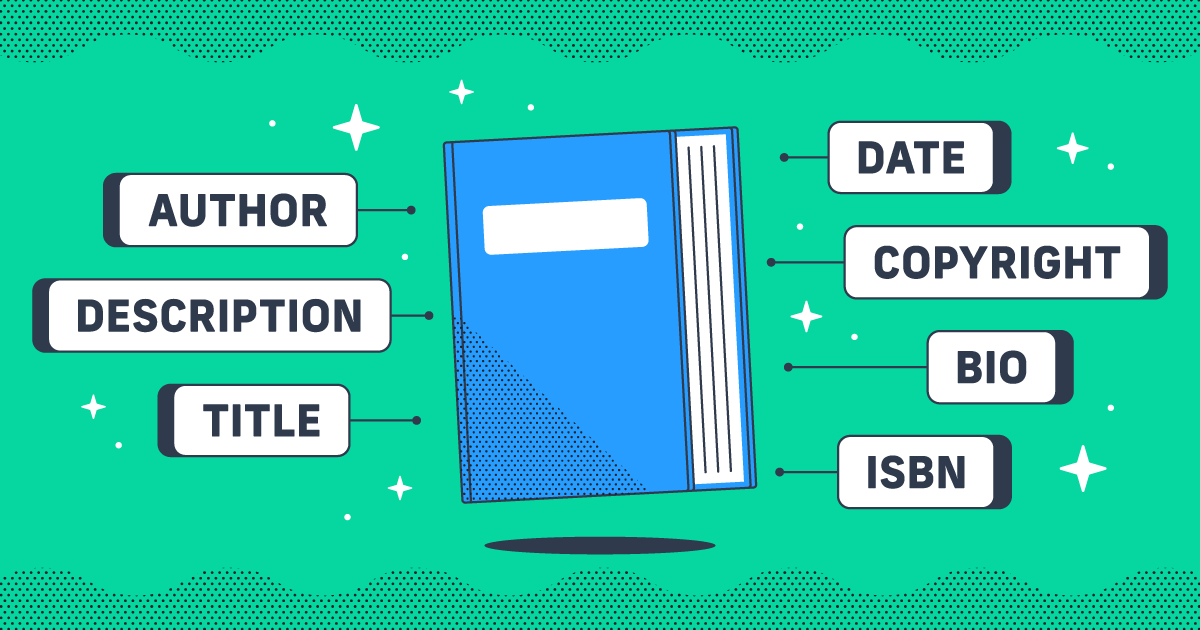Pride All the Time: The Importance of Representation in Literature
June 1st is the first day of Pride month, a hard-fought-for and hard-won month-long celebration of the LGBTQ+ community and remembrance of those who paved the way for a more inclusive future. But it’s also a month that comes with an onslaught of think pieces and brand statements that talk about the importance of representation and inclusivity—some sincerely, some not.
Yes, I recognize the irony here.
Representation in literature—whether that representation encompasses sexuality, gender, race, ethnicity, religion, abilities, disabilities, etc.—is something that is and always has been very important to me. And it has been a privilege to be able to amplify often marginalized voices on our social media, blog, and bookstore since I joined Lulu. But while we often talk about the importance of amplifying diverse voices and providing a platform and opportunity for all stories to be shared, we don’t always touch on why it’s important.
It’s both impossible and irresponsible to talk about why representation matters in a blanket way that applies to everyone – representation means different things to different people. But all the same, here’s my brand-sanctioned think piece about the importance of representation and inclusion in literature, why it’s important to me, and maybe why it should be important to you too.

Why Representation Matters
It’s hard to talk about why representation matters without being at least a little bit anecdotal, so hopefully you’ll bear with me for a minute or two.
I was 28 years old the first time I came across a book character with the same sexuality as me.
To provide some context here, some background—before I was 28, my cumulative six years of higher education consisted of reading anywhere from 1-5 books a week. I worked in a bookstore for five years, and at a traditional publishing company for, at that time, a year. Outside of education and career, I have always been a voracious reader—so it really is not an exaggeration to say I had read a couple thousand books before I picked up Let’s Talk About Love by Claire Kann.
A couple thousand books without reading a single one with a main character that I identified with, in this particular way.
Now, to be entirely fair, I found plenty of other representation in books—I’m a cis white woman from an upper middle-class suburban American family in the twenty-first century, and there’s no shortage of books that are practically tailor-made just for me. My experience looking for this specific kind of representation in literature is a little microcosmic sliver of what so many other, more marginalized groups have dealt with for decades.
Take, for example, the informal annual Diversity in Romance Report conducted by The Ripped Bodice every year since 2016. It shines a pretty harsh light on the disparity of racial representation in adult romance, one of the most lucrative (and widely read, despite what judgemental snobs want you to believe) commercial fiction genres in the industry. Author and blogger Malinda Lo also did her own unofficial analysis of LGBTQ+ representation in Young Adult literature from 2011 to 2019 (and yeah, those numbers are pretty dim too, though they do get better every year). We like to think that diversity is on the rise in publishing, and yes, technically it is, but there’s still a long way to go before we see even proportionate representation, let alone equal representation.
What do I mean by proportionate representation? Well, using the Diversity in Romance Report data as an example, their survey found that 12% of all romance novels published in 2020 were written by BIPOC (Black, Indigenous, and People of Color) authors, and the other 88% were written by white authors. But if you look at data from the US Census Bureau, 76.3% of the US population identify as white, with the remaining 23.7% being BIPOC. Proportionate representation would mean seeing the breakdown of romance novels published in 2020 much closer to that 24/76 split, instead of the 12/88 split.
Even my admittedly niche identity, which only an estimated 1% of the population identifies with, should have more representation than one book in 20-something years of reading.
I’ll stop being coy about it—I’m asexual. If you have to Google what that means, or if your first thought was “What, like a sponge?” then don’t worry, you’re not alone! Asexuality isn’t very popular or well-known, frequently misunderstood, and even a little bit controversial within the LGBTQ+ community.
(Spoiler alert: that right there is a really good case for why representation is important.)
Asexual people—“aces,” because everyone loves a flashy nickname—have little to no interest in sex. Like most sexualities (yes, even hetero), asexuality is a spectrum within a spectrum, so it’s a little bit different for everyone, but that’s the general gist of it. Most people who identify as asexual have little to no interest in sex or having a sexual relationship. Yes, this is super awkward to be writing about for a professional blog for the company I work for.
If you want to learn more, check out The Trevor Project for some great educational material and resources. I’d also recommend the book Ace: What Asexuality Reveals about Desire, Society, and the Meaning of Sex by Angela Chen.
Inclusivity
You’ve probably heard the word “inclusivity” used a lot recently—inclusivity in the workplace, inclusivity in media, inclusivity in education… it’s a popular buzzword right now. Hey, even we’re guilty—our page highlighting Books for Pride is lulu.com/bookstore/inclusivity. But what does it actually mean, and what does it mean in this context?
Merriam-Webster very helpfully defines inclusivity as “the quality or state of being inclusive.” Inclusive, then, is defined as “including everyone; especially: allowing and accommodating people who have historically been excluded (as because of their race, gender, sexuality, or ability).”
Including everyone. The practice of being inclusive simply means including everyone.
According to a 2020 survey conducted by the analytics company Gallup, 5.6% of Americans self-identified as LGBTQ. At face value that might sound small. Are we really fighting so hard to represent five percent of the population? Short answer: yes. Long answer: according to the data collected by the US Census Bureau in 2020, roughly 331.5 million people are living in the United States. 5.6% of 331.5 million is roughly 18.6 million.
18.6 million people are asking to see more of themselves in the books they read, the films they watch, and the shows they binge. That’s not a small number. That is, in fact, higher than the population of every state in the US except California, Texas, Florida, and New York. Imagine if we just decided that the entire state of Georgia wasn’t worth talking about or listening to.
I don’t blame you if you’re still thinking “Okay, but why does it matter? Why is it so important to see yourself in book characters? I’ve read plenty of books with characters that I didn’t personally identify with.”
First of all, good—you absolutely should read books that don’t necessarily resonate with your personal identity. That’s how we grow, develop empathy and compassion for other people, and learn about exciting new cultures, people, and experiences. But also, that’s a fair question. Why does it matter that we include characters of different sexualities, genders, ethnicities, religions, etc. in all media? It’s all about perception.
Perception
Our friends over at Merriam-Webster have some interesting definitions for perception. “A result of perceiving,” for a start, which is really making me think I need a new go-to dictionary. Maybe “awareness of the elements of environment through physical sensation” is the closest applicable definition, or maybe “a capacity for comprehension.”
For our purposes, let’s say that perception is about seeing, recognizing, and understanding that something or someone exists. Or maybe, when relevant, perception is about recognizing that you are not alone in your existence.
Perception for the 86.7%*
*86.7% of respondents to Gallup’s survey identified as heterosexual, 7.6% declined to answer questions about their sexual identity
You ever had trouble really wrapping your head around the existence of something you’ve never actually seen, touched, or met? Maybe it’s religion. Maybe it’s bagged milk. Maybe it’s a teenager who is confident they were assigned the wrong gender at birth. We’ve all been there in some capacity or another.
The only way to really come to understand these things that mystify us is to interact with them. In some cases, that’s easy. I can study religious texts or speak with people who are more in touch with their faith to understand why it resonates with them. I could, I guess, travel somewhere and hold, and maybe even pour, bagged milk. Do you know what’s even easier? Picking up a YA book about a transgender teenager and trying to understand their perspective by putting yourself in the protagonist’s shoes (I’d recommend Cemetery Boys by Aiden Thomas, if you need somewhere to start. Or hey, support a Lulu Author or two—Honey Walls by Bones McKay & Alex Dingley, or Victory Lap by K.A. Mielke & Riley Alexis Wood).
But representation, and the perception influence that comes with it, don’t always have to be so front and center. Queer representation in literature doesn’t have to be A Big Story About My Struggles With My Sexuality that centers around queer pain—they can and should be about joy and positive experiences too. Even more than that, they can and should be just… normal. The best way for literature to influence the perception of queer identities is just to include them as normalized character details.
Take, for example, Seanan McGuire’s gorgeous novella Every Heart a Doorway. This 2017 Hugo Award and Nebula Award winner is a lush story about a school for wayward children who have returned from Alice-in-Wonderland-style adventures and need a little help reacclimating to the real world. The main character Nancy is a newcomer at the school, and when other students start showing up dead, it falls to her and a few of her new friends to find the murderer before anyone else gets hurt.
None of that is about sexual or gender identity, right? It’s a little bit whimsical, a little bit spooky, a nice little fantastical mystery. Nancy also happens to be asexual. But really, that’s it. Nancy just happens to be asexual. It’s not relevant to the plot, it’s not a big deal, and it doesn’t cause Nancy any particular pain or strife other than an awkward conversation or two… it’s just a normalized part of who she is. There’s no big fanfare about it, no big deal made about it, but a reader that might not be familiar with asexuality, picked this book up because they like critically acclaimed fantasy novella, just quietly and unobtrusively learned something new. Their perception of marginalized sexualities, particularly an often overlooked one, was just ever so slightly changed.

Your Free Lulu Account
Create a Lulu Account today to print and publish your book for readers all around the world
Perception for the 5.6%
What about those of us who do identify as a member of the LGBTQ+ community? Why is it important that we see ourselves represented on the pages of the books we read?
I can’t answer that for everybody, but I can answer it for myself. We’re getting anecdotal again, but I’ll try to keep it short and sweet.
As a teenager in the mid-aughts, I didn’t have resources like The Trevor Project, the Human Rights Campaign, or honestly even social media like Twitter or Tumblr, where conversations about different sexualities are both nuanced and normalized. I had my friends, an insufficient single semester of health class, and books.
And nowhere in any of those resources—my friends, my education, literally the entire Teen Fiction Reading Room at my local library—did I come across one single other person who understood the way I felt about sexuality. Nothing, nowhere. In fact, it wasn’t until I read a Tumblr post during my senior year of college—that was defending the inclusion of asexuals as part of the LGBTQ+ community, (told you we’re controversial)—that I ever even heard of asexuality. I was 22 when I learned that I wasn’t broken, other people felt the same way I did, I just hadn’t met them yet.
I can’t imagine how different my life would have been if I’d understood that sooner. Truly can’t comprehend it. Just like bagged milk.
Obviously, things have changed. Now, in 2021, we have all those incredible resources and networks, and more. Teenagers today have so much more access to information, literally in their back pockets, and that’s amazing. But it’s still important—maybe even more important—that we provide visual representation in media. Because it’s one thing to have an abstract understanding that a thing like bagged milk exists. It’s another thing entirely to put yourself into the shoes of a person cutting open that bag and pouring the milk into a pitcher and thinking, “Oh, now this makes sense to me.” And maybe, just maybe, even “this makes a lot of sense, actually. Maybe even more sense than our boxed milk. I might look into using this bagged stuff myself.”
This metaphor is getting away from me, but I hope the point stands. It’s important to see all sorts of characters in literature. Important for readers to be exposed to a person or identity that they’re unfamiliar with. Important for people to consider perspectives other than their own. Important for people to understand that they’re not alone.
And in case you’re wondering, I have found more ace-friendly characters and books in the three years since I read Let’s Talk About Love. Not very many—they are still few and far between—but a few. You know what they say, if you want something done right…

…write a book with an asexual main character, that is. Not annihilate half the universe. I am firmly Team Iron Man, as far as that is concerned.
How Self-Publishing Can Help
The most incredible thing about self-publishing—the most important and empowering and truly amazing thing—is that anyone can do it. There are a lot of factors that prevent more inclusive representation in literature, but most of them can be boiled down to the variety of gatekeepers that exist within the traditional publishing industry.
(If you aren’t familiar with the concept of gatekeepers in publishing, check out this blog post to learn more)
There are too many stories out there about “a publishing house turned me down because ‘we already have a Black book on the schedule for Fall 2021’” or “love that you’re writing an Own Voices story about a bisexual woman, but romance readers aren’t interested in that.” It’s a sad reality that even when authors are trying their hardest to push for more representation in all literary genres, traditional publishers aren’t keeping up.
But guess what. Self-publishing doesn’t have gatekeepers. No one is going to stop you from sharing your story. Everyone has an equal opportunity to share their voice with readers around the world. There are an amazing number of books in the Lulu bookstore that include tags like LGBTQIA, queer, transgender, pride, inclusivity, own voices, etc. And I hope that those numbers will continue to grow.

Create Your Book
Use Lulu's free templates to easily create and publish your book today.
We can all do our part to amplify marginalized voices, to make sure that all stories, from all walks of life, have an equal opportunity to be heard. My favorite part of my job, hands down, is getting to see the incredible projects people publish on Lulu. Coming across a book in our bookstore and sending it to my team and saying “Look how incredible this book is,” or “What a unique idea” or, best of all, “How can we share this?”
It’s wonderful to have the opportunity to say “Let’s use our platform to highlight Books by AAPI Authors, Books by Black Authors, or Books Empowering Women,” not just when it’s trendy, but all year round. We’re proud today, tomorrow, and all the other days too.
Before I go, one last important note to keep in mind as you celebrate Pride – or Black History Month, or Women’s History Month, or Asian/Pacific Islander Heritage Month, Hispanic Heritage Month, or any of the important awareness months meant to shine a spotlight on marginalized audiences. While this post focused on LGBTQ+ representation, the arguments above are relevant and applicable to all kinds of representation. Representation of all races, ethnicities, genders, abilities and disabilities, socioeconomic status, etc. – it’s all important. It all matters. Representation of all kinds matters. All the time, and always.




